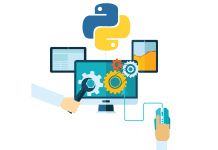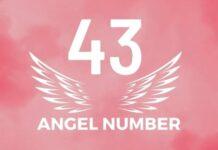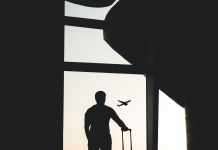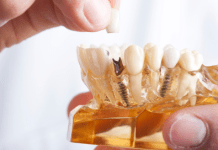Heart attack is a myocardial infarction that happens when the regular blood flow of your heart gets blocked. When there is an absence of adequate blood, the tissues lose oxygen and die. This can happen when an artery supplying your heart muscle gets blocked due to a blood clot. It leads to a cut off from the blood and gives you an instant heart stroke.
Table of Contents
History
Research studies have shown that 3500 years old Egyptian mummies had evidence of cardiovascular disease. Signs of atherosclerosis, a disease that narrows the arteries, has been found from the remains of Pharaoh Merenptah. Other mummies have also shown Signs of a Heart Attack. The high-fat diet of the pharaohs may have been a contributing factor.
It is not exactly clear when humanity first became aware of coronary artery diseases. In the 16th century, Leonardo Da Vinci dissected the heart of a 100-year-old man to understand the mechanism behind the pumping of blood. He studied the opening and closing of cardiac valves depending on the contraction of the atria and the ventricles.
William Harvey, King Charles I’s physician, first established the fact that blood circulates throughout the body from the heart. Friedrich Hoffman, who at that time was the chief professor of medicine in the university of Halle, noted that when the passage of blood in the coronary arteries is reduced, coronary heart diseases occur.
John Hunter, an English physician, was the first in Western medicine to establish a relation between chest pain and sudden death. He also stated that these symptoms could be caused by emotional distress or anger. But it was not until the beginning of the twentieth century, that myocardial infection was well known to cause death.
Why Does it Happen
Among heart attack causes, blockage of an artery is the chief one. Arteries supply blood to the heart. A heart is a muscle that needs blood to work properly. As we grow old, fatty materials may build up on the inner walls of the arteries, which can block the blood supply. When these fat deposits break, blood cells stick to the broken parts and cause blood clots.
When a blood clot completely stops the flow of blood to the heart, a heart attack occurs. An individual experiences chest pain due to this. This process of building up of fatty materials or plaque is called atherosclerosis. As a result of enough blood not reaching your heart, you may experience pain and discomfort known as angina, which is among the first signs of a Heart Attack. It is characterized by a feeling of tightness in the chest, sometimes accompanied by pain. The pain may spread to your arms and shoulders.
The blockage of arteries leads to a part of the heart muscle dying. If this blood clot is not treated in time, the heart muscle suffers further damage. It may be permanent in some cases.
Stages Of the Disease
There are four different stages of a heart attack. These are:
Stable Angina
Angina is among the early signs of heart disease. In the initial stage, the plaque has just started forming on the inner walls of the arteries, but the flow of blood is not completely blocked yet. One may experience discomfort and pain after physical exertion. Pain experienced during these activities is due to the blood not receiving enough blood to support the activity.
Unstable Angina
In this stage, the fat deposits start to grow, and even minor physical activities lead to the emergence of symptoms. The heart is not yet damaged and receives enough blood during times of painlessness.
Heart Attack with Partial Blockage
Although the arteries haven’t been blocked completely, there is enough blockage to cause injury to the heart.
Complete Blockage and Full Heart Attack
In this stage, parts of the heart don’t receive any blood at all, and there is a complete blockage. There is persistent pain. Immediate medical attention is required in this case, to avoid further damage and death.
Risk Factors
Knowing about the risks of heart attack helps reduce the chances of it occurring. Some of the risk factors are:
Age
As you grow older, your risk of suffering a heart attack increases and you may notice Signs of a Heart Attack.
Gender
Men are more likely to get a heart attack than women. After menopause, the women’s risk grows.
Ethnicity
Aboriginal people and people from the Indian subcontinent have a higher risk of heart diseases.
Family history
If someone in your family has a history of heart diseases, it may increase your risk.
Smoking
the likeliness of a smoker to die from heart diseases are two times more than sudden cardiac arrests. The damage due to smoking affects the blood vessels and reduces the amount of oxygen in the blood. Smokers also suffer from angina, stroke and heart attacks at a much younger age, compared to non-smokers.
High cholesterol
Cholesterol is a fatty substance that is carried in the blood by lipoproteins. There are two types of lipoproteins- high-density lipoprotein(HDLC) and low-density lipoprotein(LDLC). LDLC contains more fat than HDLC and is called ‘bad cholesterol’. HDLC prevents fat from building up in the arteries, hence it is known as ‘good cholesterol’. Low HDLC may also lead to an increase in triglyceride levels, which raises the risk of heart disease. An imbalance in cholesterol levels is one of the chief causes of a heart attack.
High Blood Pressure
As the heart pumps blood throughout the body, the blood applies some pressure on the walls of the arteries. This is called blood pressure. Depending on what you are doing at the moment, your blood pressure fluctuates. The normal blood pressure is 120/80mmHg. Anything higher than 140/90mmHg is considered high blood pressure. When the blood pressure remains high for a long time, it increases the risk of heart attack and Signs of a Heart Attack may be noticed.
Diabetes
Diabetes causes high blood glucose, which may harm the vessels carrying blood. When the blood vessels are damaged, the blood may not reach the heart properly, and thus, may lead to a heart attack.
Sedentary lifestyle: Regular physical activities reduce the risk of heart disease occurring. A sedentary lifestyle may lead to deposition of fat in your body which increases the risk of a heart attack.
Diet
Healthy eating should be maintained to prevent heart diseases.
Depression
People who are reclusive and not socially active are more likely to experience Signs of a Heart Attack.
Symptoms
Heart attack symptoms vary from patient to patient. A person might suffer a sudden cardiac arrest without showing any signs of a Heart Attack, while anther may notice symptoms frequently. The pain also varies, being mild in some cases, and extremely severe in others. However, a great number of signs and symptoms usually suggest a greater chance of having a heart attack.
The early signs of a heart attack may be chest pain and discomfort felt during or after physical exertion. This can be relieved by taking some rest. Some people may experience symptoms days or weeks before a sudden cardiac arrest. Some of the common symptoms of heart attack are:
- Breathlessness
- Tiredness
- Cold sweat
- Dizziness
- A tight, squeezing sensation in the chest, along with the pain that may spread to your arms, shoulder, neck, and back
- Nausea and vomiting
- Coughing and wheezing
- Anxiety or panic attack
Treatment
A heart attack is an extremely severe condition and one experiencing Signs of a Heart Attack should seek treatment immediately. Consulting a cardiologist is advised. Some of the treatment methods for heart attack include:
Angioplasty
Here, a deflated balloon is attached to a special tubing, which is then threaded through a blood vessel in the arm or the groin region. The tube reaches the affected site. The balloon is then inflated to push the fat deposits outward against the artery walls to restore the flow of blood.
Laser Angioplasty
In this method, a laser is attached to a tube, which is then inserted into an artery. The tube reaches the blockage site, where the laser vaporizes the fat deposits and helps clear the blockage.
Artificial heart valve surgery: This involves replacing a defective heart valve with a healthy one.
Atherectomy
This is similar to angioplasty. But here, a rotating shaver is attached to the tip of the tube. At the blockage site, this shaver is used to clear the plaque.
Bypass surgery
This is a complex surgery where new passages are created, so that blood can flow through them to reach your heart.
Cardiomyoplasty
This is an experimental heart attack treatment procedure in which muscles are taken from a patient’s back or abdomen, which are then wrapped around the heart to support it.
Heart transplant
In extremely severe cases, when the heart of the patient is beyond repair, a healthy, donated human heart is used to replace the defective one.
Radiofrequency ablation
Sometimes a small area of the heart might be causing irregular heartbeats. This procedure involves the use of radiofrequency energy to destroy the problematic area of the heart. However, this method may cause some complications.
Stent procedure
A stent is a wire mesh tube used to force open an artery and allow the flow of blood. Such stent grafts are used for larger arteries. Another kind of stent is available which is made up of material that the boy can dissolve. It is often coated in medicine that is released slowly into the artery to prevent further blockage.
Transmyocardial revascularization (TMR)
A laser is used to make tiny channels through the heart muscle and into the left ventricle. This allows blood to flow through the tiny channels and supply oxygen to the heart muscle.
Medications
A wide range of medications is available for heart attack treatment. It is best to consult your cardiologist when you notice Signs of a Heart Attack, rather than self-administering these drugs as they might have serious side effects. Here are some of the common drugs that are used:
Anticoagulant
Used to prevent blood from clotting in a narrow artery, thus reducing the risk of a heart attack occurring.
Antiplatelet agent
Drugs like clopidogrel, prasugrel and ticagrelor are used to keeps blood clots from forming. They are usually taken after angioplasty or stent implantation.
Angiotensin-converting enzyme (ACE) inhibitor
Widens blood vessels and lowers resistance by lowering levels of angiotensin II. It lowers blood pressure and makes the heart’s work easier and more efficient.
Angiotensin II receptor blocker(ARB)
If you get side effects from ACE inhibitors, like a persistent cough, ARBs can be used. They work just like ACEs, i.e. expanding the blood vessels and reducing the strain on your heart.
Angiotensin receptor neprilysin inhibitor
There are substances in the body that can open up narrowed arteries. Neprilysin is an enzyme that breaks down these substances. Further, by inhibiting neprilysin, these substances can fulfill their role. This improves blood flow, reduces salt retention, and eases the strain on the heart.
Beta-blocker
It makes your heartbeat slow, which lowers blood pressure, and thus decreases the risk of heart disease.
Combined alpha and beta-blocker
This method is used for patients suffering from hypertension. The process involves the use of an IV drip containing combined alpha and beta-blockers.
Anti-antiginal medicines
Nitrate medicines such as glyceryl trinitrate help increase the blood flow to your heart by expanding the blood vessels. They come in two varieties- short-acting and long-acting.
Calcium channel blocker
These drugs include Amlodipine, Felodipine, Diltiazem, Nicardipine, etc. They disrupt the flow of calcium into the heart. This reduces electrical conduction and dilates the arteries. Thus, blood pressure is reduced.
Cholesterol-lowering medications
Drugs like statins are used to lower blood cholesterol levels. So, an imbalance in cholesterol levels increases the risk of heart disease.
Digitalis preparation
This is used to treat irregular heartbeats. It achieves its goal by increasing the force of contraction.
It is never too late to prevent a heart attack. As soon as you notice signs of a Heart Attack, you should consult a doctor. If the symptoms are severe, then you should immediately admit yourself to a nearby hospital. Since a cardiac arrest may prove to be fatal if not treated immediately, you must take immediate measures.



















The point of view of your article has taught me a lot, and I already know how to improve the paper on gate.oi, thank you.